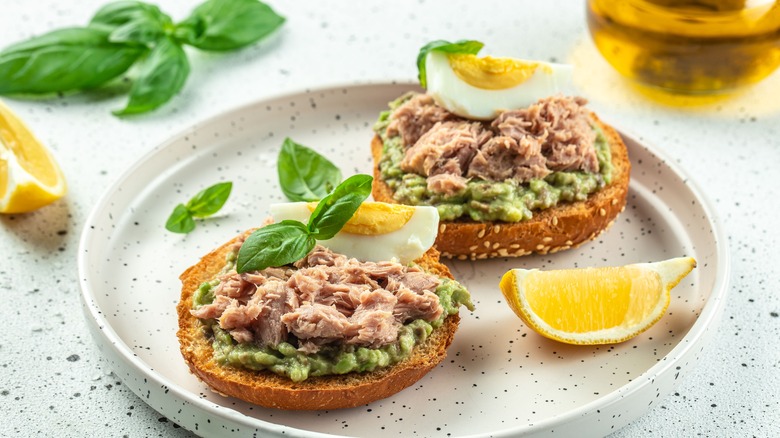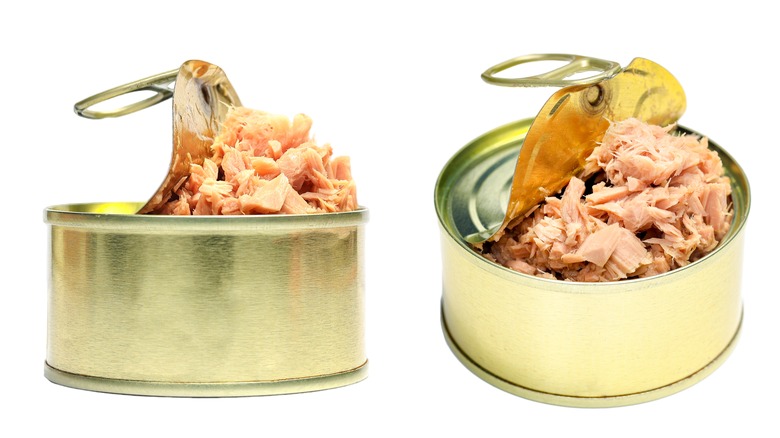Why Does Canned Tuna Only Come In Short Tins?
If you've ever browsed your grocery store's aisles looking for a specific item, then you probably know that certain foods always look a certain way on store shelves. For example, salad dressing comes in a bottle, tortilla chips come in a crinkly bag, and tuna comes in a short, round little can.
You know what store-bought foods look like, but have you ever wondered why they're packaged a certain way? For some ingredients, the reason for the packaging might be obvious (and some might never be — like the reasons behind flour being sold in a paper bag), but for something like canned tuna, it's a familiarity that isn't questioned but also isn't understood. It turns out the origins of canned tuna say a lot about why it's sold this way.
As legend has it, canned tuna was born out of necessity — a California fisherman named Albert P. Halfhil realized that sardines were becoming harder to catch, so he filled his empty sardine cans with the tuna he caught instead. Those short, round tuna cans we're used to seeing only exist because that's how sardines were packed when canned tuna was invented.
Tuna cans were inspired by sardine cans
In the early 1900s, California's coast was teeming with sardines, but in 1903, problems like overfishing and rough ocean waters caused the well to run dry. Halfhil, who made his living from sardine fishing, had to improvise. So he picked the next most-common fish to catch in the area: Tuna. He started packing sardine cans with tuna instead, which helped him keep making money, and within about a decade, he was reportedly selling 400,000 cases per year — up from 700 cases the first year he tried it.
Tuna cans might have been invented out of sardine cans, but why were sardines sold in short cans in the first place? It comes down to preservation. Canning, which was invented by Nicolas Appert in the early 1800s, was one of the earliest ways to preserve food, which is why it was the chosen method for popular perishables — like fish — back then. And if isn't broken, don't fix it, right? Canning has now been around for centuries, and sardines fit perfectly in short, rounded tins. Once they found a home in that little can, they never left it. And eventually, it was tuna's home, too.
There are other theories as to why tuna is sold in cans
Although it's pretty clear that canned tuna originated due to sardine cans, it's interesting to think that more than 100 years later, those stubby round cans are still the way it's primarily sold. There are a few theories as to why.
Some avid tuna buyers took to Reddit to share their theories behind tuna cans' shape, saying they believe it has to do with marketing. One user suggested that tall, thin tuna cans "wouldn't have much room for a logo," compared to the shorter, wider cans that are currently used. Another user suggested it could be that tuna is just consumed in relatively small quantities (there are actually FDA guidelines advising some groups of people to limit tuna consumption due to its mercury content), which could suggest there is not an immediate need for larger, differently-shaped tuna cans.
But it could all circle back to that first idea: That most people can picture the shape and packaging of the food they're looking for when they hunt grocery store shelves. If tuna were to switch up its signature look, it might anger a lot of tuna lovers who suddenly have to re-wire their brains to find canned tuna in a different design on the shelf.


